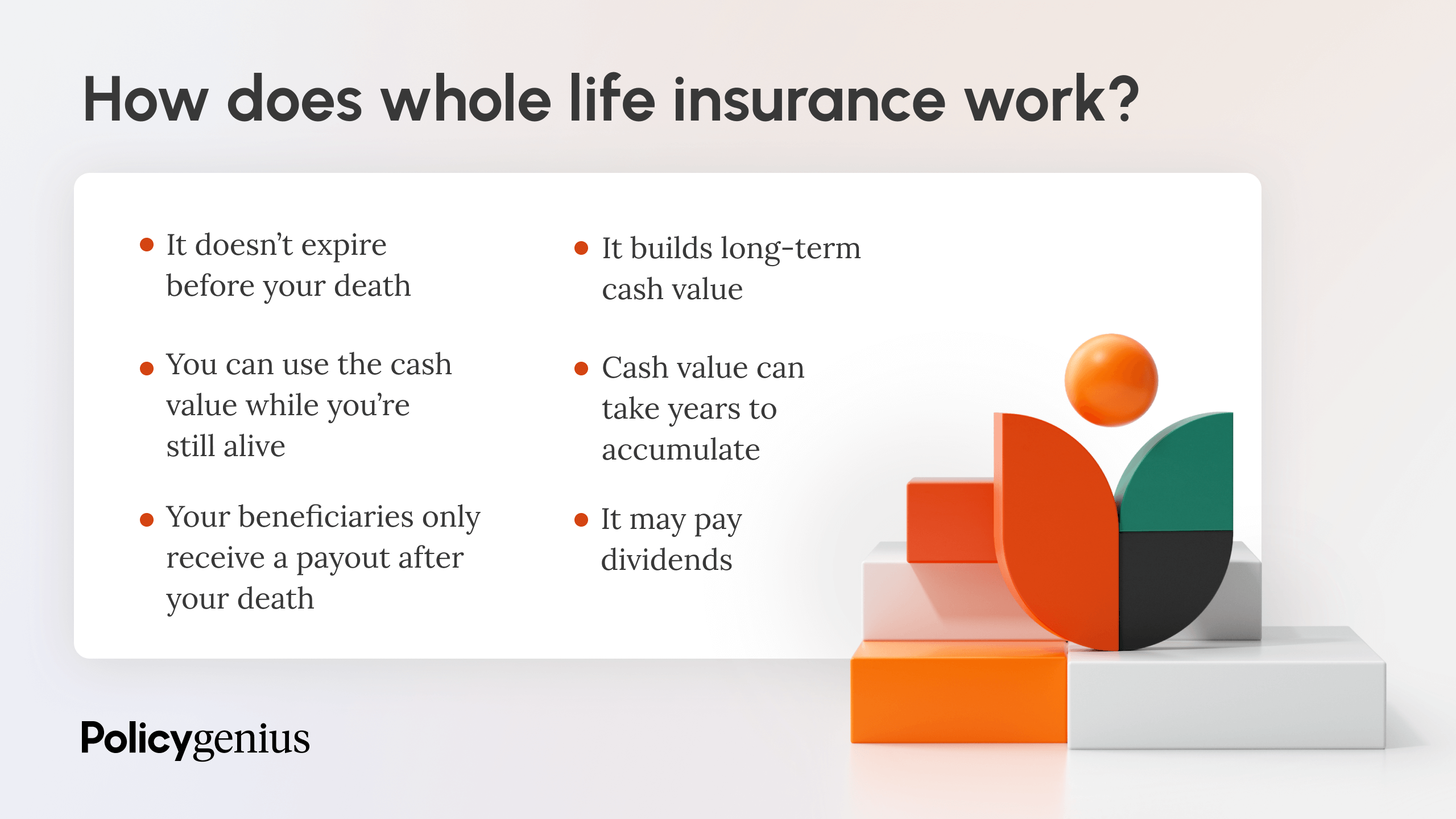Pulse of Information
Your source for the latest insights and updates.
Whole Life Insurance: The Policy That Outlives You
Discover why whole life insurance is the ultimate financial safety net that provides lifelong coverage and leaves a legacy for your loved ones!
Understanding Whole Life Insurance: Key Benefits and Features
Whole life insurance is a type of permanent life insurance that provides coverage for the insured's entire life, as long as premiums are paid. One of its key benefits is that it combines a death benefit with a savings component, also known as the cash value. Over time, this cash value accumulates on a tax-deferred basis, allowing policyholders to borrow against it or withdraw funds as needed. Unlike term life insurance, which expires after a set period, whole life insurance offers lifelong protection and can provide peace of mind knowing that your beneficiaries will receive a guaranteed payout upon your passing.
In addition to its lifelong coverage, whole life insurance is characterized by several features that make it an attractive financial product. Premiums are typically fixed for the life of the policy, ensuring predictability in financial planning. The policy may also participate in profits through dividends, which can be reinvested into the policy, used to offset premiums, or taken as cash. Ultimately, whole life insurance is not just a safety net but also a strategic financial tool, offering both protection and the potential for cash value growth, making it a compelling option for long-term financial security.

Is Whole Life Insurance Right for You? Common Questions Answered
When considering whether whole life insurance is right for you, it’s essential to weigh its benefits and drawbacks. Whole life insurance provides lifelong coverage, which means it does not expire as long as premiums are paid. One of its significant advantages is the cash value component, which grows over time and can be borrowed against if needed. However, the premiums for whole life insurance are typically higher than those for term policies, which can make it less appealing for budget-conscious individuals. Here are some common questions to help you decide:
- What are the primary benefits of whole life insurance?
- How does the cash value accumulation work?
- Are there any alternatives to consider?
Another critical factor in deciding on whole life insurance involves understanding your long-term financial goals. If you're looking for a policy that builds cash value and provides stability, whole life insurance can be a suitable choice. On the other hand, if your primary goal is to secure affordable life coverage for a specific period—such as for your children’s education or paying off a mortgage—a term life policy may better fit your needs. Ultimately, assessing your financial situation and future goals is crucial, and consulting with a financial advisor can provide valuable insights specific to your circumstances.
Whole Life Insurance vs. Term Life Insurance: Which Policy Suits Your Needs?
When considering whole life insurance vs. term life insurance, it's essential to understand the fundamental differences between these two policy types. Whole life insurance provides coverage for the policyholder's entire lifespan, as long as premiums are paid, and it includes a cash value component that grows over time. This can serve as a living benefit, allowing for loans against the policy or even withdrawing funds. In contrast, term life insurance is designed to provide coverage for a specific period—usually 10, 20, or 30 years—and pays a death benefit only if the insured passes away during that term. While term life insurance is typically more affordable, it does not build cash value, which makes understanding your long-term financial goals crucial.
Choosing between whole life insurance and term life insurance ultimately depends on your personal financial situation and long-term objectives. If you prefer predictable premiums and lifelong coverage, a whole life policy may be more suitable. However, if you need affordable protection to cover temporary obligations, such as raising children or paying off a mortgage, term life insurance could be the better choice. Additionally, many people opt for a combination of both types of coverage to balance their needs. It's advisable to consult with a financial advisor to evaluate your distinct circumstances and determine which policy aligns with your personal and family financial goals.